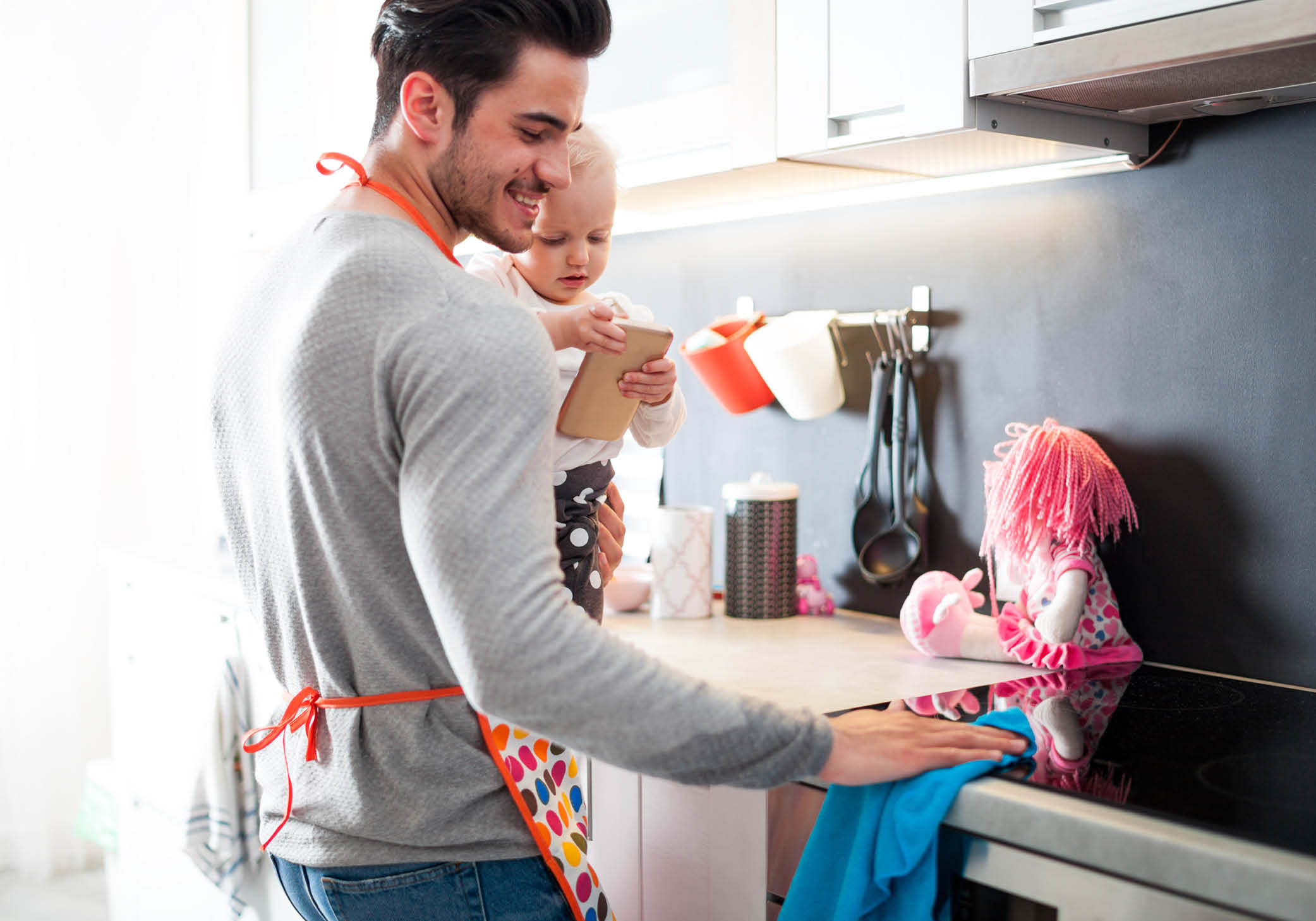Are you searching for tips on how to clean your home in the most effective and sustainable way? You are not alone. Over the last few years, people started looking for better ways to clean, sanitize, or disinfect their homes and quickly realized that not every product is suitable for every surface. In fact, some can be downright harmful. Below, we reveal some of our favorite tips for choosing the best products to clean your home’s surfaces.
Glass Windows
Well-crafted glass windows and furniture can make your house or apartment sparkle. However, it can be tricky to figure out how to clean your home’s glass surfaces properly, which products to use, and how often to use them. For example, the experts at My Domaine recommend window washing every six months to allow for much-needed natural light to stream into your spaces. The pros at the Magazine are fans of using commercial cleaners on them or “a DIY mixture of one cup water, one cup rubbing alcohol, and one tablespoon vinegar,” which is often a less expensive way to break through residue for a streak-free result. Use a lint-free cloth (like microfiber cloths) so that you don’t have to worry about leaving fuzz behind. Save some of the DIY solution for weekly use on your glass tabletops to keep them fingerprint-free.
Stainless Steel
Many modern kitchens are filled with sleek stainless steel appliances. And while you may love the look, there is no question that these surfaces reveal fingerprints and spills more quickly than other finishes. Start by knowing the basics – you don’t want to apply flammable cleaning products to a gas stove or oven. You’ll also want to ensure that your new appliances don’t offer you specific warnings against using certain products before you begin cleaning.
Generally, you should avoid using oil-based formulas, glass cleaners, or alcohol-based cleaning products on your stainless steel appliances. Instead, Leanne Stapf—the Chief Operating Officer at The Cleaning Authority, suggests to Martha Stewart Living that people try “using products like baking soda that can revive dull stainless steel.” All you need to do is apply a small amount of baking soda to a damp, soft cloth and then buff it out and rinse.
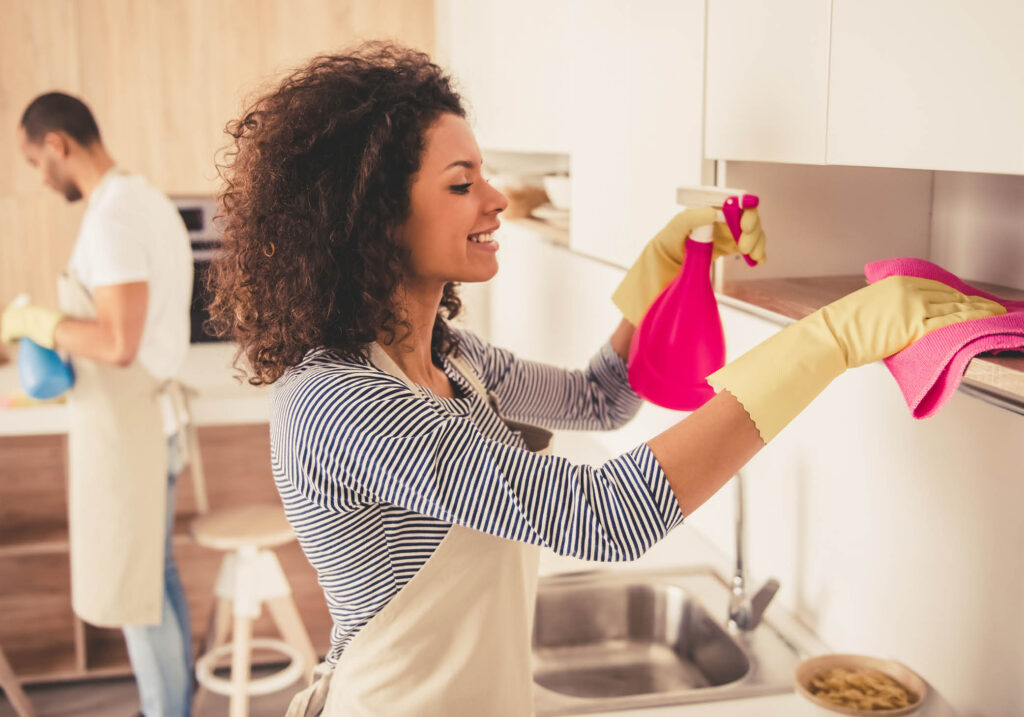
Synthetic Stone Countertops
While pretty solid-surface countertops are made to resemble stone, these attractive synthetic alternatives have different cleaning requirements. To keep these seamless counters looking their best, use a damp microfiber cloth to wipe them down daily. For stained areas, gentle dish soap or ammonia-based products (like glass or all-purpose cleaners) can be used. Are you stumped on how to clean tougher stains from your solid-surface counters? For more difficult stains on shiny synthetic stone countertops, the experts at The Spruce suggest using “a liquid, mildly abrasive cleaner, while stains on non-shiny (matte) finishes are easily cleaned with a baking soda and water paste.”
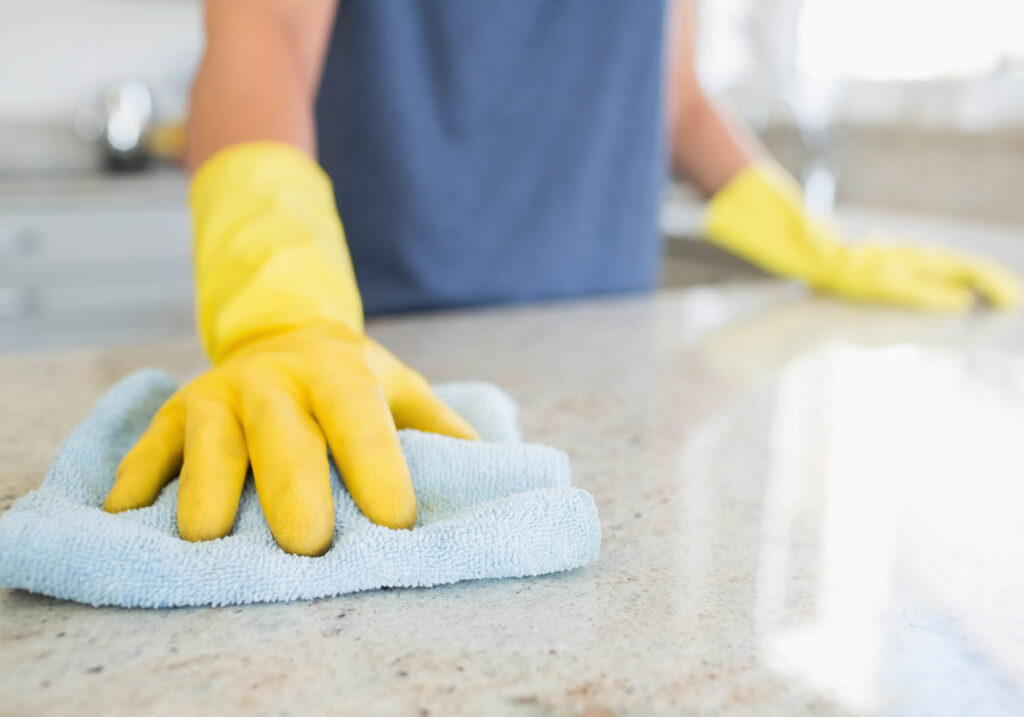
Granite Counters
If you are wondering how to clean your home’s granite countertops, experts agree that a gentle cleaner, like a Castile soap or dish soap, is your best bet. Jennifer Parnell, the co-founder of Humble Suds, tells Martha Stewart Living that the advantage of a gentle cleaner over more abrasive ones is that it “will prevent the erosion of the granite countertop’s sealant and won’t cause any physical damage to the stone.” She also advises the Magazine that before using all-purpose products on granite surfaces, “ensure they do not contain citric acid, bleach, or ammonia.” Dry the surface with a soft microfiber towel to remove any remaining residue or water, as both can stain granite countertops if left to sit for too long.
Marble Surfaces
Marble tabletops and counters are beautiful to look at but surprisingly delicate and challenging to maintain. Scratches, chips, and stains can happen easily, although sealers should offer protection for a couple of years. According to Martha Stewart Living, the best way to clean your home’s marble surfaces is by dusting the surfaces regularly with a soft cloth and “[washing] the marble periodically with a cloth dampened with warm water, and, if necessary, a bit of mild dishwashing liquid.” Then, wipe down the surface again with another damp cloth. Never use abrasive cleansers on marble. Spills should be blotted and rinsed immediately to avoid staining. The Magazine also recommends “[applying] marble polish (available in hardware stores) on a regular basis to maintain the stone’s luster.”
Bathroom Tile
While it makes sense that people might want to use bleach on all-white bathrooms, it may not be the best option if you want to preserve the longevity (and shine) of your bathroom tile. And bleach should never be used on colored tile surfaces. Instead, Better Homes & Gardens is a fan of using DIY cleaners, even on stubborn soap scum. The Magazine recommends “[mixing] 1/2-cup white distilled vinegar with a gallon of warm water.” This solution works well when scrubbing wall tile and counters (except those made of granite or marble) and mopping floors.
Shower Doors
Shower doors can be challenging. You are often doing battle with hard-water build-up, mold, and soap scum. The experts agree that you should try to clean shower doors whenever you clean the bathroom – about once a week. While many heavy-duty products are on the market for this type of job, a variation on a DIY favorite can be effective. My Domaine recommends that you fill a clean spray bottle filled with a solution that is “2 parts white vinegar and 1 part dish soap.” Shake up the solution, spray it on the shower door, and let it sit for 30 minutes. Wipe the shower door down with a microfiber cloth, sponge, or eco-friendly Swedish dish cloth.
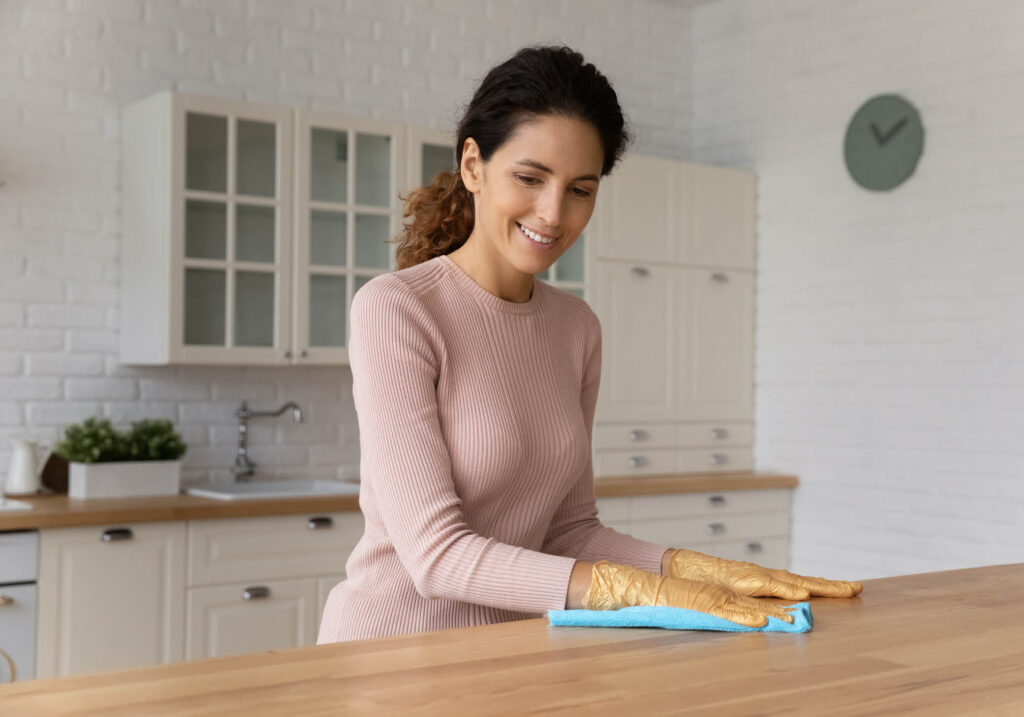
Wood Furniture
When deciding how to best clean your home’s wood furniture, you’ll want to focus on cleaning products that enhance the piece’s natural shine while also protecting it against future sun damage. The Spruce loves Weiman’s Furniture Wipes because the wipes “not only clean dust and dirt off your wood surfaces, but they also polish them.” These wipes only use plant-based ingredients, so using them is safe for your kids and pets. As a bonus, the Magazine reveals that “[the] wipes also use a micro-filling technology to remove scratches and protect the surface from future scratches.”
Upholstered Furniture
Better Homes & Gardens advises that you take a multi-step approach to deep cleaning your upholstered furniture: vacuum, spot clean, and sanitize. Regular vacuuming is ideal for removing pet hair and crumbs, and it’s a great place to start when deep cleaning. Spot cleaning with soap and water can quickly take care of the occasional spill, and it works well when dealing with “heavily soiled” areas. The final step to sanitizing your upholstered furniture, according to Better Homes & Gardens, may be using products “like OxiClean Laundry and Home Sanitizer or Febreze Antimicrobial Fabric Spray.” But before you begin, the Magazine cautions, “as with any cleaning agent or fabric surface, it’s always best practice to test your sanitizing products for colorfastness on an inconspicuous spot before using it on the entire surface area.”
Household Electronics
Our households feature a lot of electronics that need a delicate hand when cleaning and disinfecting. While you need to stop moisture from getting inside your electronic devices, you still want to remove grime, germs, and dust on your screens, remote controls, gaming systems, and computer peripherals. Editors at The Spruce hailed Weiman Electronic Cleaning Wipes as the best way to clean your favorite electronics. The Magazine explains: “Weiman Electronic Wipes are designed to remove dust, dirt, and fingerprints without leaving behind lint or streaks. The formula creates a protective film on your devices that prevents scratches and repels the static that attracts dust and dirt.”
For disinfecting your portable electronic devices, you may need to turn to Clorox Disinfecting Wipes. Just be sure to squeeze out any extra liquid from the wipe before using it on your phone or tablet. Then dry the surface with a microfiber cloth to get rid of any residue.
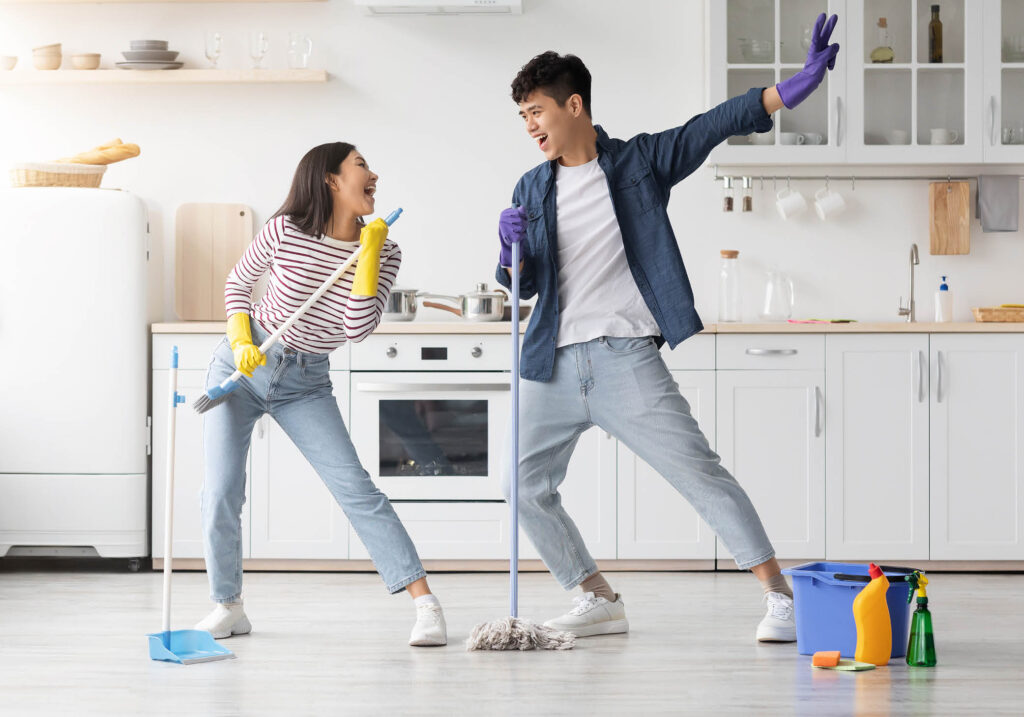
Hardwood Floors
Knowing how to clean your home’s hardwood floors can be challenging because you want to deep clean them without warping them or leaving them scratched. Start by removing loose dirt using a cloth duster, vacuum with a hard floor attachment, or soft broom. Next, Mary Gagliardi, the Clorox in-house scientist and cleaning expert, tells Martha Stewart Living that mopping hardwood floors with a solution of “one-fourth cup of Pine-Sol Multi-Surface Cleaner … with a gallon of water” once a week will get rid of grime while making the floor shine.
An Ace Hardware helpful expert, Lou Manfredini, cautions against using vinegar on hardwood flooring. Why? Manfredini explains that “vinegar is an acid and long-term use will dull the floors.” If you are searching for a natural-based cleaning solution, he instead recommends to Martha Stewart Living that people should choose an option “like Bona No Scent Floor Cleaner Liquid,” which can be sprayed onto the floor directly, left to sit for two minutes, and then mopped up without a need for rinsing.


